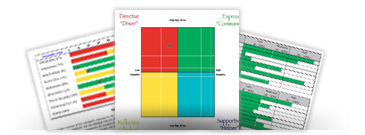5 Ways to Measure Sales Training Effectiveness
It is not hard to figure out that sales training is one of the most valuable tools for increasing productivity and making happier, more efficient employees that directly add to the bottom line. But how do you know whether the sales training chosen has actually paid off in the long run, well after the temporary “rah-rah” enthusiasm (that just about all training provides) wears off?
Here are five factors to examine when measuring sales training effectiveness.
1. Revenue Increases
One of the most obvious and important benchmarks is increased revenue. If your people are not making you more money after sales training, then the rest of the list hardly matters and you know that the training is just no good — or you have people with no sales aptitude.
Sales training allows you to imbibe your sales force with the necessary skills for them to succeed, while also holding them accountable for employing those skills in the field, especially when a formal sales process with defined metrics is used. When everyone is on the same page, as they should be after training together, sales managers can set deadlines and specific objectives which should directly translate into more money within a given time period.
2. Retention Rate Improves
Overall, sales training will increase the retention rate of your sales staff. However, if the sales training is ineffective, or irrelevant, your employees might not see fit to stay and will potentially cost you tens of thousands of dollars to replace each.
In order to maintain and measure sales training effectiveness, it must be skill-specific and relevant to each specific sales role. If salespeople feel they haven’t been provided the necessary tools to succeed in selling, then support will fall and the commitment to learn in the future will deteriorate.
3. Workload Stress Drops
Poorly trained people make mistakes and cost money, upsetting managers and executives. Overworking sales managers contributes to stress that can cut productivity dramatically, due to negative human emotions and reactions getting in the way. When subordinates succeed, their managers succeed, which relieves pressure on both.
When sales training programs actually produce competent people, the resulting workplace environment can take a turn for the better. This can help you ascertain whether or not the training has fulfilled its purpose, as too much internal bickering is a symptom of poor training.
4. Customer Satisfaction
Customer satisfaction is a great metric for determining sales training effectiveness, with the understanding that fulfillment, delivery and service personnel also contribute greatly to overall satisfaction. A salesperson that is truly on the ball will of course be on top of these other departments and his customers’ experiences, and will detect any problems in a scheduled delivery before the transaction turns sour.
Surveys, testimonials, and referrals help to gauge customer satisfaction, but so does the amount of repeat business, which leads us to our last point.
5. Upselling and Cross-selling
Upselling and cross-selling are tremendous profit boosters, as little further marketing expense is required to get more business from the same customer. Well-trained salespeople will be able to identify when prospects need a higher-valued offering then what they have initially chosen, and will also be able to identify opportunities to sell related items and accessories as the relationship continues.
When your salespeople are making more profit from each customer through upsells and cross-sells, you know your sales training effectiveness is high.
Sales training comes in many different “flavors,” and anyone can call himself a trainer. Make sure you can measure the effectiveness of a system you have bought into so that you can either cut your losses early, or double down and increase the training for even greater results!



